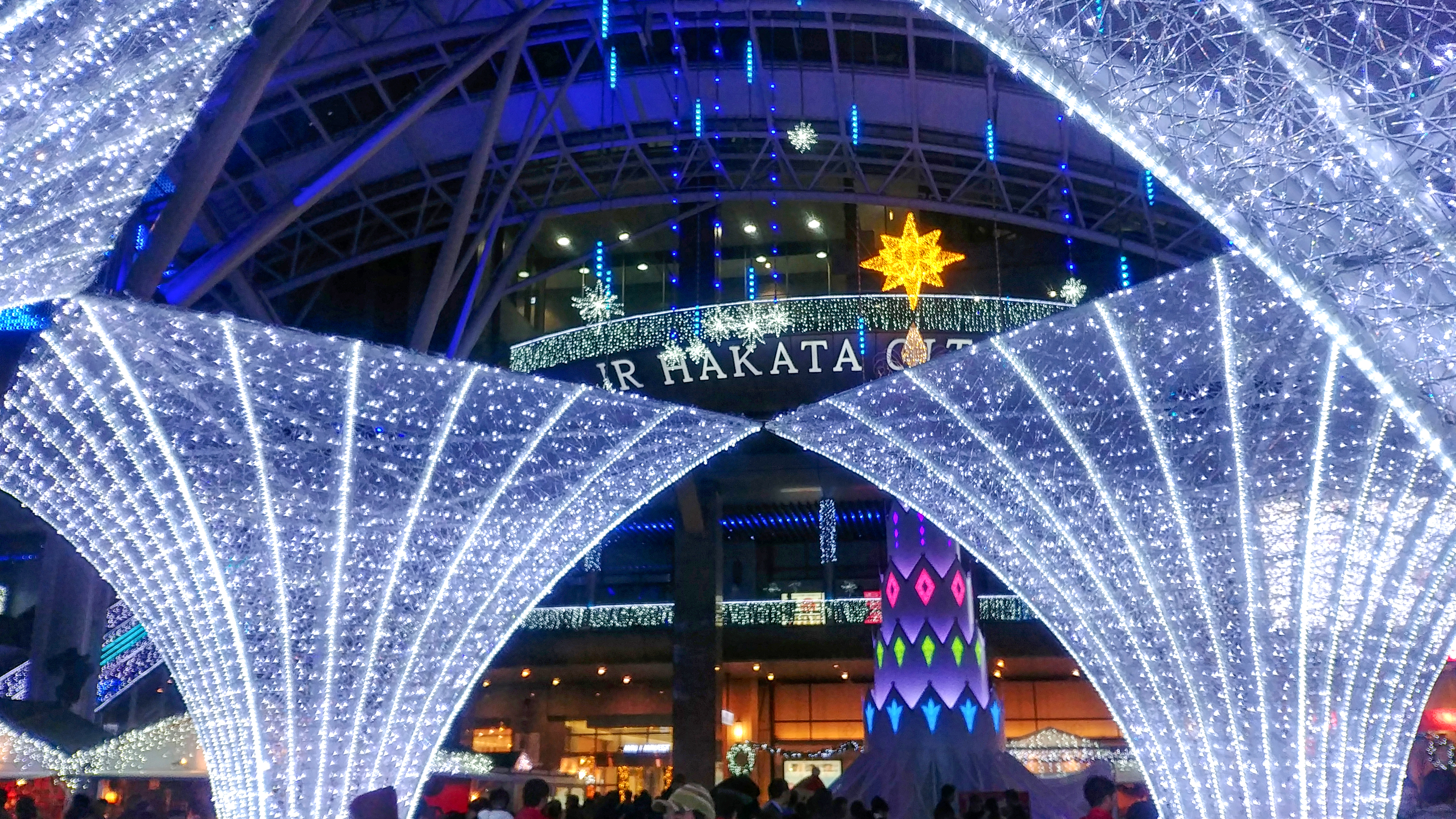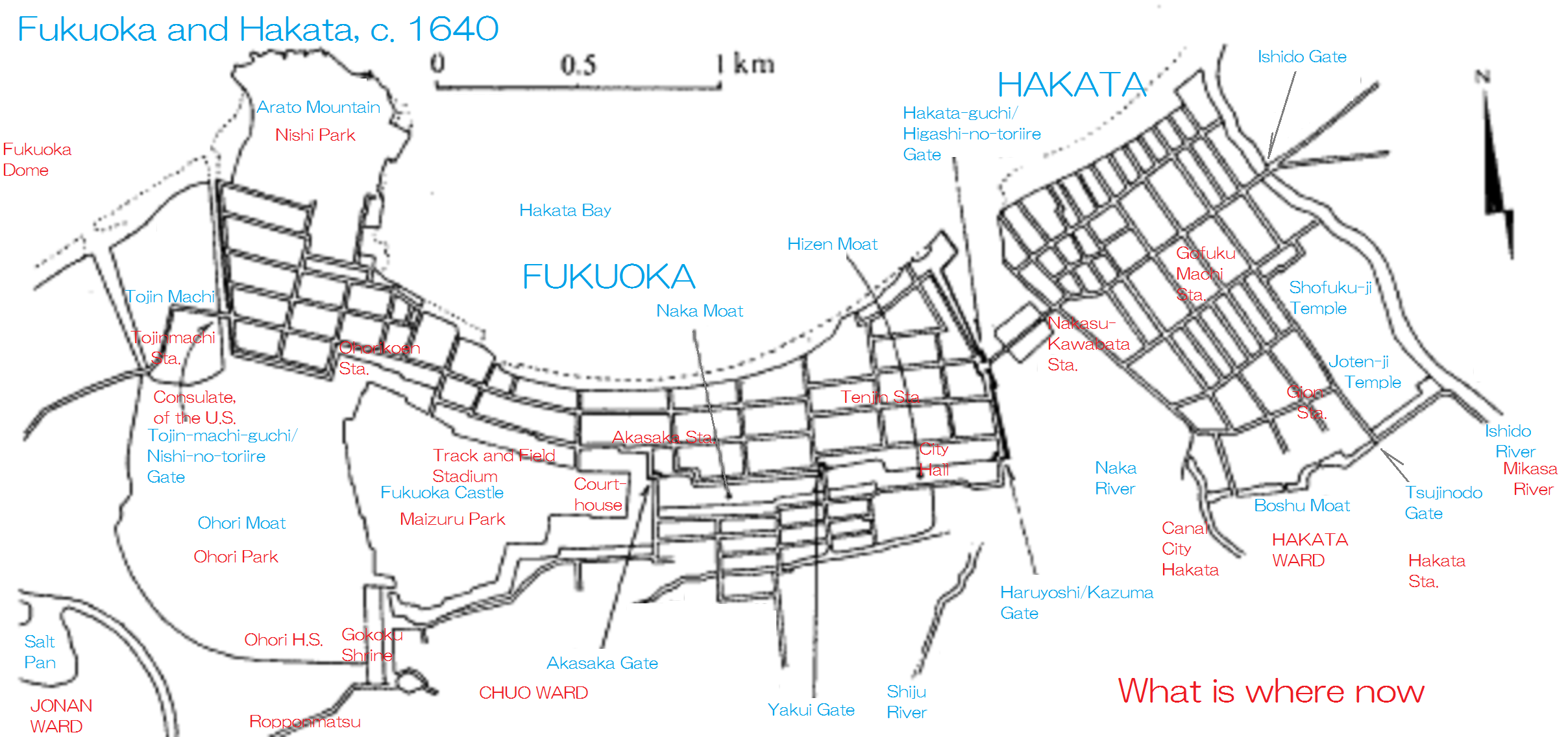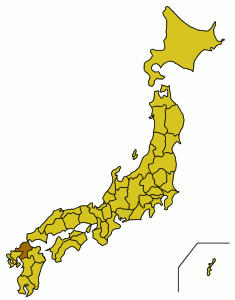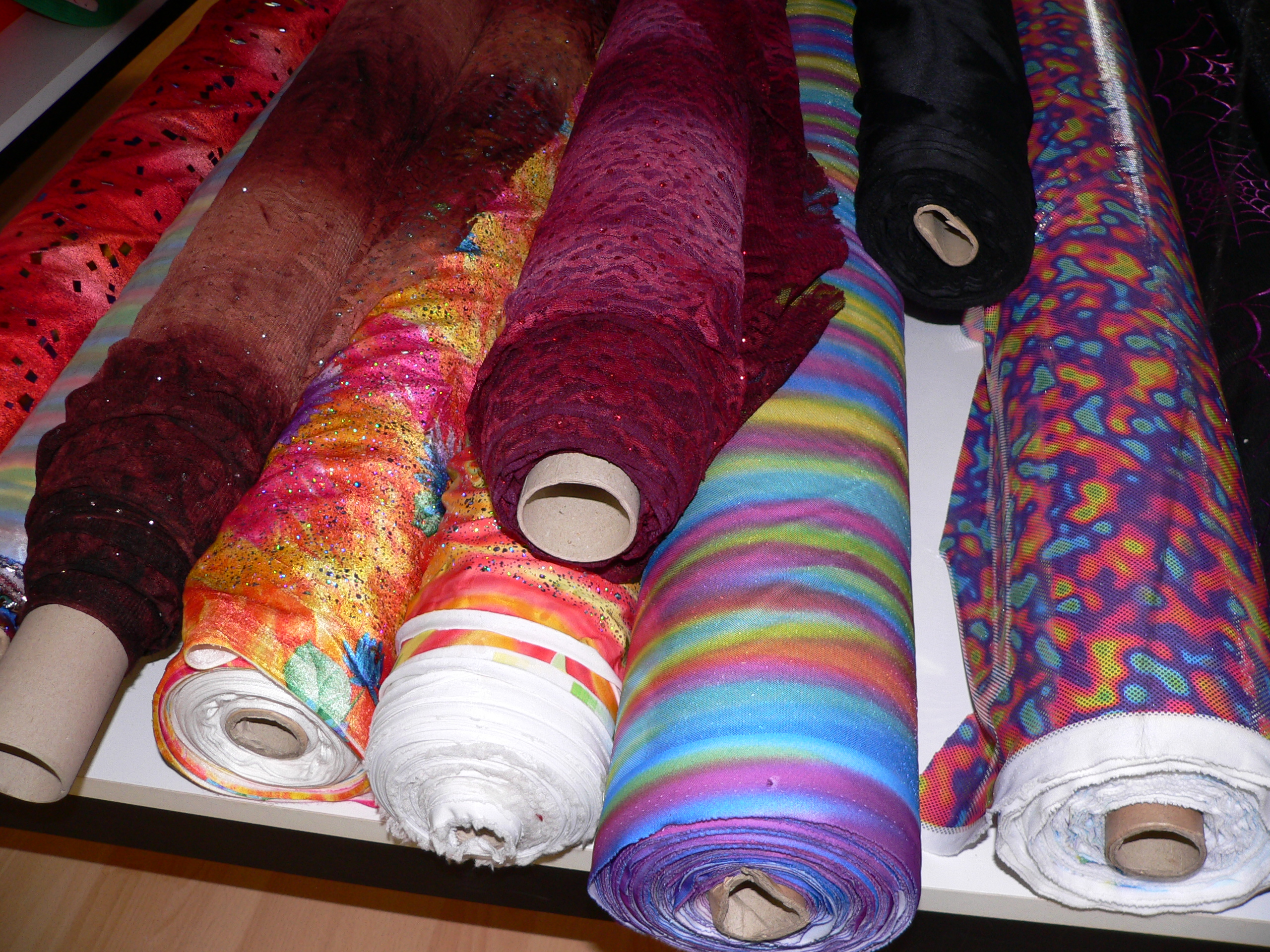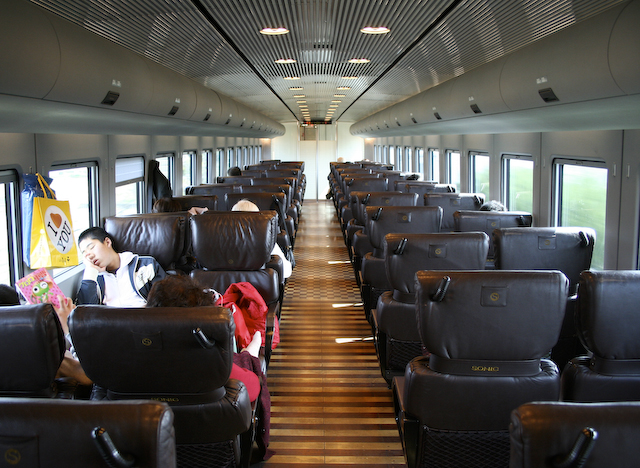|
Hakata Station
is a major railway station in Hakata-ku, Fukuoka, Japan. It is the largest and busiest railway terminal in Kyushu, and is a gateway to other cities in Kyushu for travelers coming from Honshu by rail travel. The San'yō Shinkansen from Osaka ends at this station. The station was rebuilt in 2011. The main building was demolished and a new, larger station building, as well as office buildings and new platforms, was constructed. The station reconstruction project was initiated specifically for the Kyushu Shinkansen extension from Hakata to Shin-Yatsushiro Station which continues southward through its existing route to Kagoshima-Chūō Station. The new station building has a Hankyu Department Store, its first branch store in Kyushu, as a tenant, as well as other first-in-Kyushu branch retailers including Tokyu Hands. Lines * **Fukuhoku-Yutaka Line **Kagoshima Main Line **Kyushu Shinkansen * **San'yō Shinkansen **Hakata-Minami Line * ** Platforms JR F ... [...More Info...] [...Related Items...] OR: [Wikipedia] [Google] [Baidu] |
Hakata-ku, Fukuoka
is a ward of the city of Fukuoka in Fukuoka Prefecture, Japan. Many of Fukuoka Prefecture and Fukuoka City's principal government, commercial, retail and entertainment establishments are located in the district. Hakata-ku is also the location of Fukuoka's main train station, Hakata Station, Fukuoka Airport and the Hakata Port international passenger ship terminal. Geography Hakata-ku is a ward of Fukuoka City located on its eastern edge. It is 31.47 km2 with a population of 206,629 (current January 1, 2009). Much of the ward consists of low-lying plains beside the . The northwestern end of the ward faces Hakata Bay, which includes both ferry and international cruise ship terminals . The northeast end of the ward is slightly elevated, and is named , with nearby Fukuoka Airport. Around Hakata Station is downtown; is the main dining and entertainment district of the ward along the . Hakata-ku also houses the Fukuoka Prefectural office. Economy Many Japanese companies have ... [...More Info...] [...Related Items...] OR: [Wikipedia] [Google] [Baidu] |
Fukuhoku-Yutaka Line
The is the collective name for four sections of railway lines operated by Kyushu Railway Company (JR Kyushu) in Fukuoka Prefecture, Japan. It runs between Kurosaki Station and Hakata station (66.6 km). The sections called Fukuhoku Yutaka Line are: * Part of the Kagoshima Main Line, between Kurosaki Station and Orio Station - 5.2 km * Part of the Chikuhō Main Line, between Orio Station and Keisen Station - 34.5 km * The entire Sasaguri Line, between Keisen Station and Yoshizuka Station - 25.1 km * Part of the Kagoshima Main Line, between Yoshizuka Station and Hakata Station - 1.8 km Rolling stock A pre-series two-car BEC819 series AC battery electric multiple unit A battery electric multiple unit (BEMU), battery electric railcar or accumulator railcar is an electrically driven multiple unit or railcar whose energy is derived from rechargeable batteries driving the traction motors. Prime advantages of these ... (BEMU) was tested on the line from Apri ... [...More Info...] [...Related Items...] OR: [Wikipedia] [Google] [Baidu] |
Weaving
Weaving is a method of textile production in which two distinct sets of yarns or threads are interlaced at right angles to form a fabric or cloth. Other methods are knitting, crocheting, felting, and braiding or plaiting. The longitudinal threads are called the warp and the lateral threads are the weft, woof, or filling. (''Weft'' is an Old English word meaning "that which is woven"; compare ''leave'' and ''left''.) The method in which these threads are interwoven affects the characteristics of the cloth. Cloth is usually woven on a loom, a device that holds the warp threads in place while filling threads are woven through them. A fabric band that meets this definition of cloth (warp threads with a weft thread winding between) can also be made using other methods, including tablet weaving, back strap loom, or other techniques that can be done without looms. The way the warp and filling threads interlace with each other is called the weave. The majority of woven products a ... [...More Info...] [...Related Items...] OR: [Wikipedia] [Google] [Baidu] |
Hakata-ori
is a traditional Japanese textile that has been produced in Fukuoka Prefecture for more than 770 years. There are two varieties of : and . is woven in a traditional pattern related to Buddhist beliefs, and was influenced by fabrics produced in Sui dynasty China. is the name used for containing multi-coloured designs. is most commonly found as the material for men's , though both men and women wear . is also used to produce a number of different products not related to kimono and kimono accessories, such as handbags, neck ties and scarves. History traces its history back to 1235 CE (Kamakura period Japan), when a Japanese merchant from Fukuoka Prefecture, Mitsuda Yazaemon, travelled to Song dynasty China with the Buddhist monk Shoichi Kokushi to learn Song-period trades and traditions, such as the making of (traditional Japanese cakes), ceramic production techniques, gold leaf,, the production of musk tablets wheat noodles and textile production techniques. Six years ... [...More Info...] [...Related Items...] OR: [Wikipedia] [Google] [Baidu] |
Bolt (fabric)
A bolt is a piece of cloth woven on a loom or created by a knitting machine, as it is processed, stored and/or marketed. Consequently, its dimensions are highly variableflexible and dependent upon the manufacturing, machinery, quantity, size, thickness and quality of the product. It is a unit used in manufacturing, transport and inventory. It is also used as a descriptor for wallpaper, which uses different fabrication machinery. Being encompassing, it is by its nature a generic and ambiguous term of convenience and context, used to describe fabric and wallpaper. In modern production Textile manufacturing is about converting fiber into yarn, yarn into fabric, and finally, the fabric into clothing and other useful products. At every stage, production activity is managed by unique batches. When it comes to fabric, a set of bolts or rolls forms a batch, representing the production. Manufacturing The yarn is processed by knitting or weaving, which turns the yarn into cloth. Th ... [...More Info...] [...Related Items...] OR: [Wikipedia] [Google] [Baidu] |
Yufuin-no-mori
, , and are limited express train services operated by Kyushu Railway Company (JR Kyushu) which run from Hakata via Yufuin to Ōita and Beppu on the Kyudai Main Line. Rolling stock * KiHa 71 series DMU: 1989–present (''Yufuin no Mori'') * KiHa 72 DMU: 1999–present (''New Yufuin no Mori'') * KiHa 183-1000 DMU: ::1992–1999 (''Yufuin no Mori II'') ::2004–2011 (''Yufu DX'') Withdrawn 10 January 2011. * KiHa 185 series DMU: 1992–present (''Yufu'') File:JRK_Kiha72_Yufuin-no-mori.jpg, KiHa 72 ''New Yufuin no Mori'' DMU, January 2023 File:KiHa183-1000 Yufuin no Mori II Hakata 19980700.jpg, KiHa 183-1000 ''Yufuin no Mori II'', July 1998 File:Kiha183 YUFU DX.jpg, KiHa 183-1000 ''Yufu DX'' in original red livery, May 2006 File:JNR Kiha 183-1000-Kagoshima Main Line-Dazaifu-20090904-162502.jpg, KiHa 183-1000 ''Yufu DX'' in later yellow livery, September 2009 File:Kiha185-Yufu.jpg, KiHa 185 series ''Yufu'', June 2019 Ekiben The exclusive ekiben, Yufuin no Mori Bento, can onl ... [...More Info...] [...Related Items...] OR: [Wikipedia] [Google] [Baidu] |
Nagasaki Station (Nagasaki)
is a railway station in Nagasaki, Nagasaki Prefecture, Japan, operated by the Kyushu Railway Company (JR Kyushu). It is the terminus of the Nishi Kyushu Shinkansen and the Nagasaki Main Line. The station is connected by the ''Kamome'' Shinkansen service and the '' Relay Kamome'' limited express to Hakata, and by the ''Seaside Liner'' rapid service to Sasebo. Nagasaki Electric Tramway services call at a stop in front of the station. Lines * Nishi Kyushu Shinkansen * Nagasaki Main Line Station layout The conventional line station has two elevated island platforms serving five tracks. The Shinkansen station has two island platforms serving four tracks. Platforms History The station was opened on 5 April 1905 when the railway was extended from the former Nagasaki Station to the present station. The former station, opened in 1897, was renamed Urakami Station. *5 April 1905 - Opened by Kyushu Railway. *1 July 1907 - The railways are nationalized and the station becomes part o ... [...More Info...] [...Related Items...] OR: [Wikipedia] [Google] [Baidu] |
Huis Ten Bosch (train)
The is a limited express train service operated by Kyushu Railway Company (JR Kyushu) in Japan. It runs between Hakata Station in Fukuoka, Fukuoka, and Huis Ten Bosch Station, the station for the Huis Ten Bosch theme park in Sasebo is a core city located in Nagasaki Prefecture, Japan. It is also the second largest city in Nagasaki Prefecture, after its capital, Nagasaki. On 1 June 2019, the city had an estimated population of 247,739 and a population density of 581 persons p ..., Nagasaki. History ''Huis Ten Bosch'' services started on 25 March 1992. References {{DEFAULTSORT:Huis Ten Bosch (Train) Named passenger trains of Japan Railway services introduced in 1992 Kyushu Railway Company ... [...More Info...] [...Related Items...] OR: [Wikipedia] [Google] [Baidu] |
Midori (train)
The is a limited express train service which runs between and in Kyushu, Japan, operated by the Kyushu Railway Company (JR Kyushu). Service pattern ''Midori'' services run between and , often combined with ''Huis Ten Bosch'' services between Hakata and . In the past, services were also combined with some ''Kamome'' services between Hakata and (now renamed to Kōhoku Station). Rolling stock Services are formed of 4-car 783 series electric multiple unit (EMU) sets with Green car (first class) accommodation. As of 2022, 787 series and 885 series trains are also used for Midori services to Hakata. Formations Services are normally formed of 4- or 8-car 783 series EMU formations as shown below. All cars are no-smoking. 4-car formations 8-car formations History The ''Midori'' name was first used from 1 October 1961 on limited express services operating between Osaka and Hakata using 12-car KiHa 80 series diesel multiple unit (DMU) sets. Timings were as shown below. * Down ... [...More Info...] [...Related Items...] OR: [Wikipedia] [Google] [Baidu] |
Kamome
is a limited express train operated by JR Kyushu in Japan. It operates between Hakata and Nagasaki on the Kagoshima Main Line and the Nagasaki Main Line. ''Kamome'' means seagull in Japanese. As of 23 September 2022, the name was inherited by the new Shinkansen service to Nagasaki, at which point the remaining limited express services between Takeo-Onsen and Hakata were renamed ''Relay Kamome''. History The ''Kamome'' name (written as "鷗") was first used from 1 July 1937 on limited express trains operating between Tokyo and Kobe. This service continued until February 1943. The name (written as "かもめ") was subsequently revived from 15 March 1953 for use on limited express services operating between Kyoto and Hakata. This service was discontinued in March 1975 with the completion of the Sanyō Shinkansen to Hakata. On 1 July 1976, with the electrification of the Nagasaki Main Line, services resumed (initially between Kokura and Nagasaki, later between Hakata and Nagas ... [...More Info...] [...Related Items...] OR: [Wikipedia] [Google] [Baidu] |
Nichirin
The and are limited express train services in Japan operated by JR Kyushu which run from Miyazaki Airport station to Oita and the Sea Gaia service continues to Beppu and Hakata. The ''Dream Nichirin'' overnight train service from Hakata and Miyazaki Airport was discontinued from the start of the revised timetable on March 12, 2011 in conjunction with the opening of the completed Kyushu shinkansen. In 2013 JR Kyushu began an irregular excursion train, Seven Stars in Kyushu The is a deluxe sleeping car excursion train operated by Kyushu Railway Company (JR Kyushu) in Japan since October 2013. Design The overall design concept of the train was overseen by industrial designer Eiji Mitooka. The name of the train is ..., which offers occasional overnight service to Miyazaki as part of a longer tour. References {{JR Kyushu trains Named passenger trains of Japan Kyushu Railway Company Railway services introduced in 1968 Railway services discontinued in 2011 ... [...More Info...] [...Related Items...] OR: [Wikipedia] [Google] [Baidu] |
